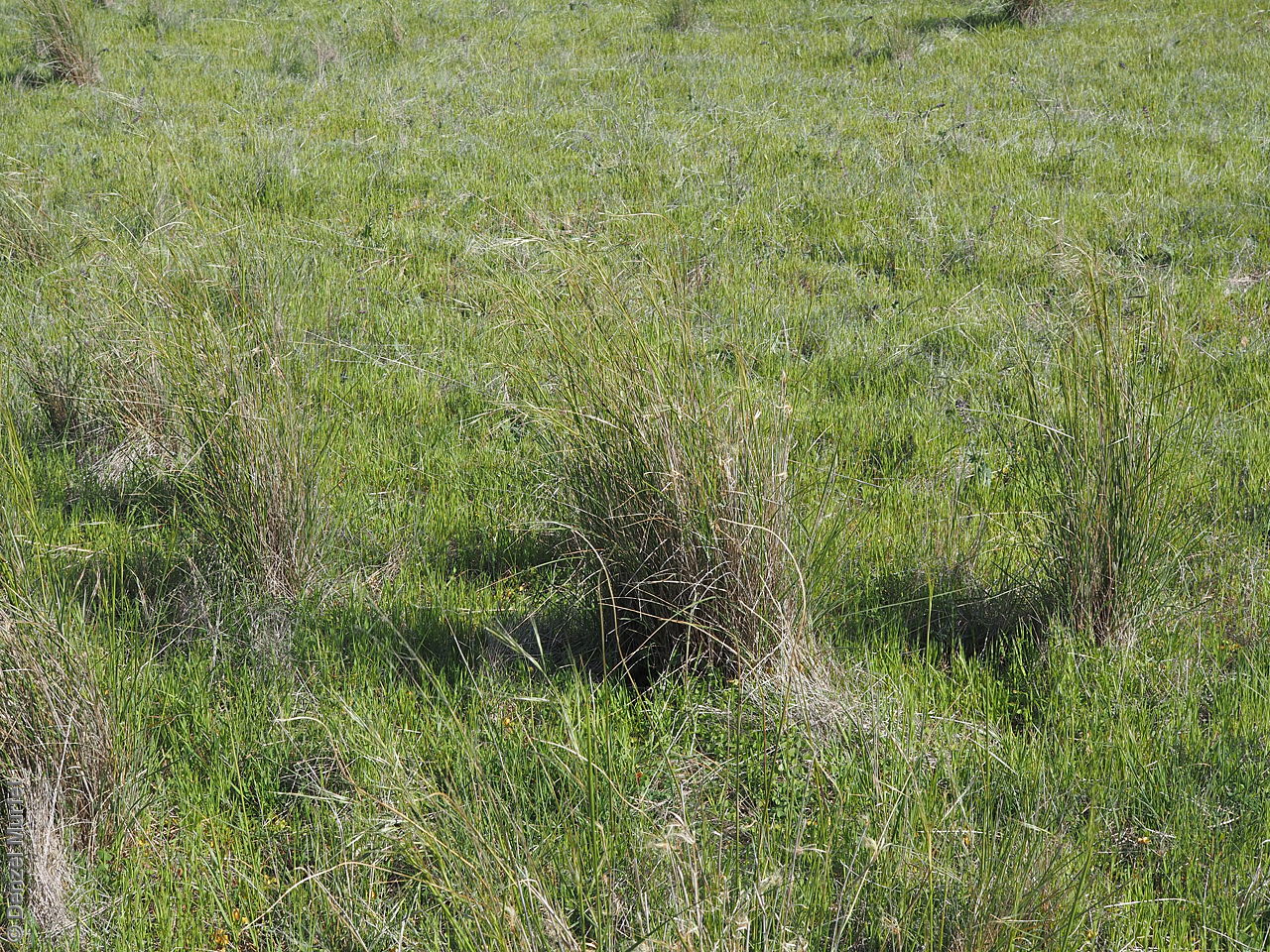
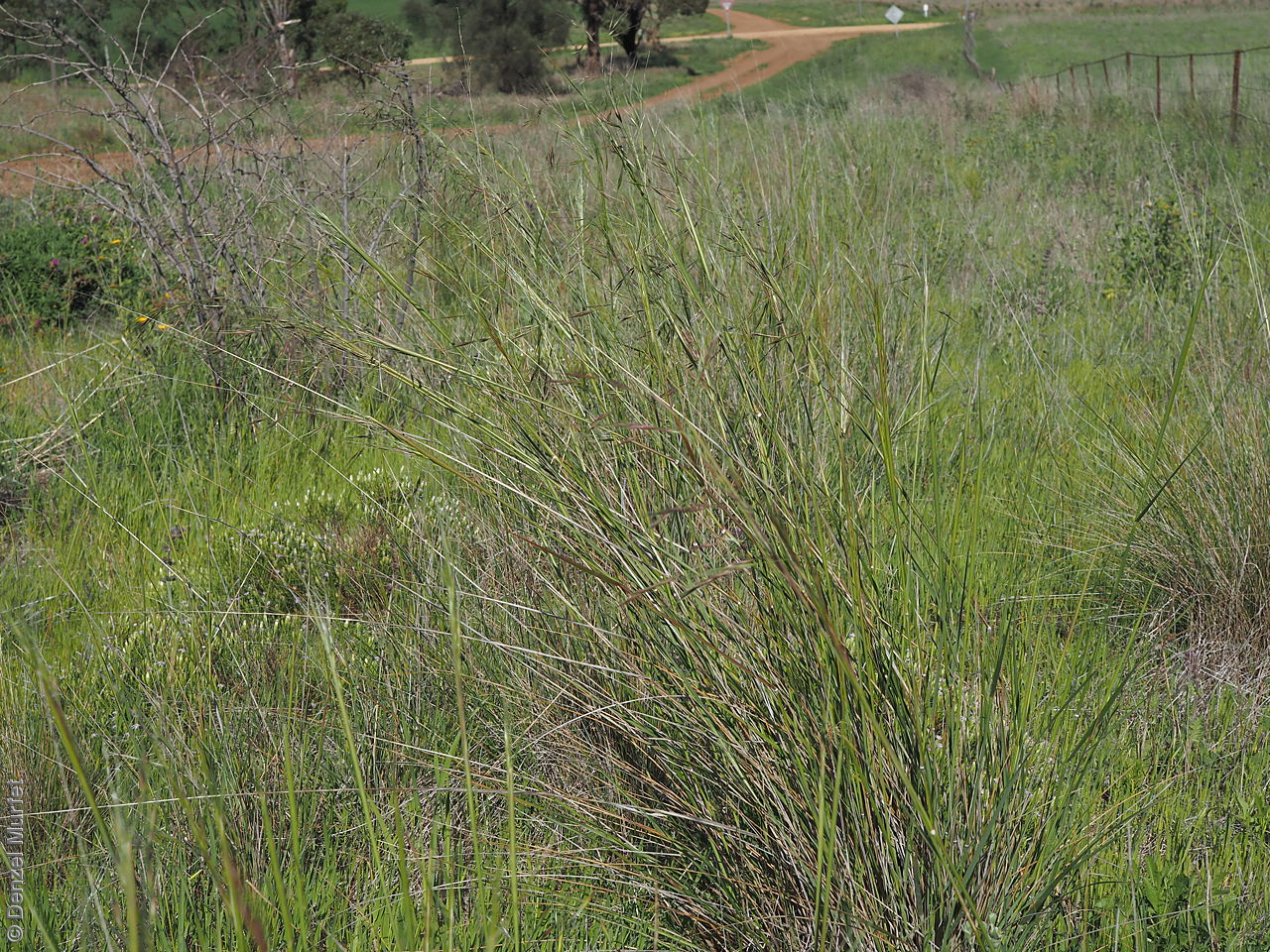
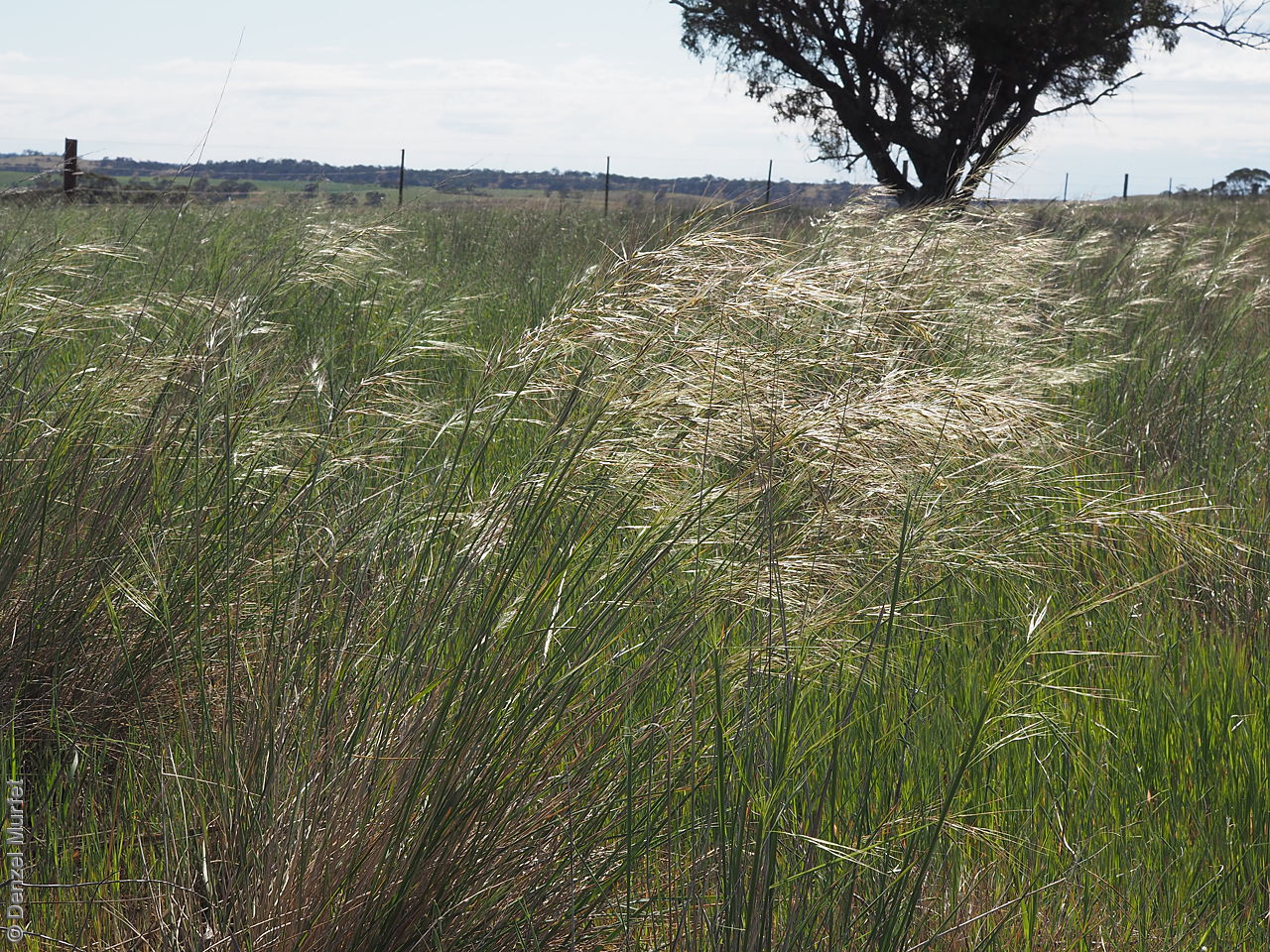
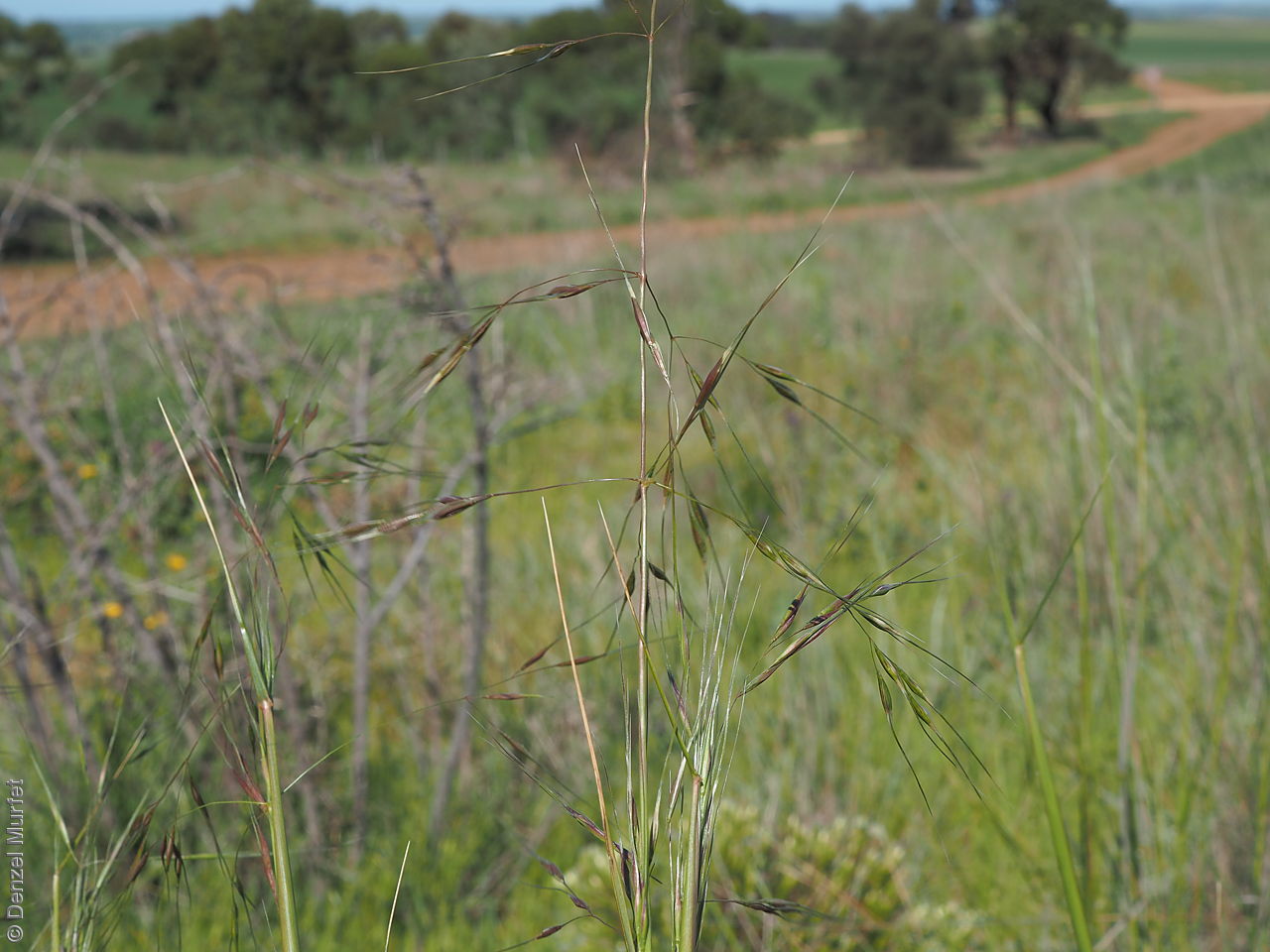
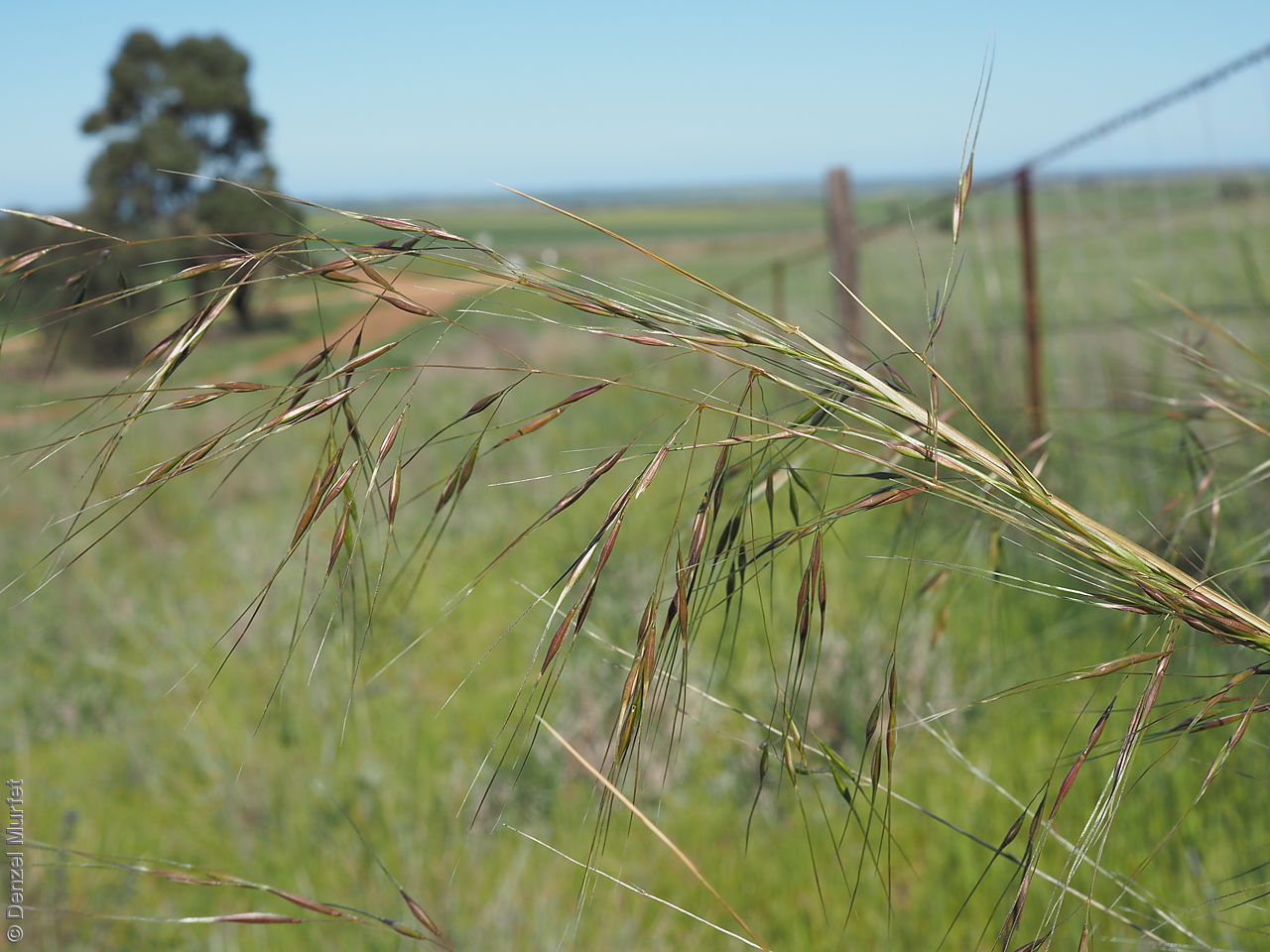
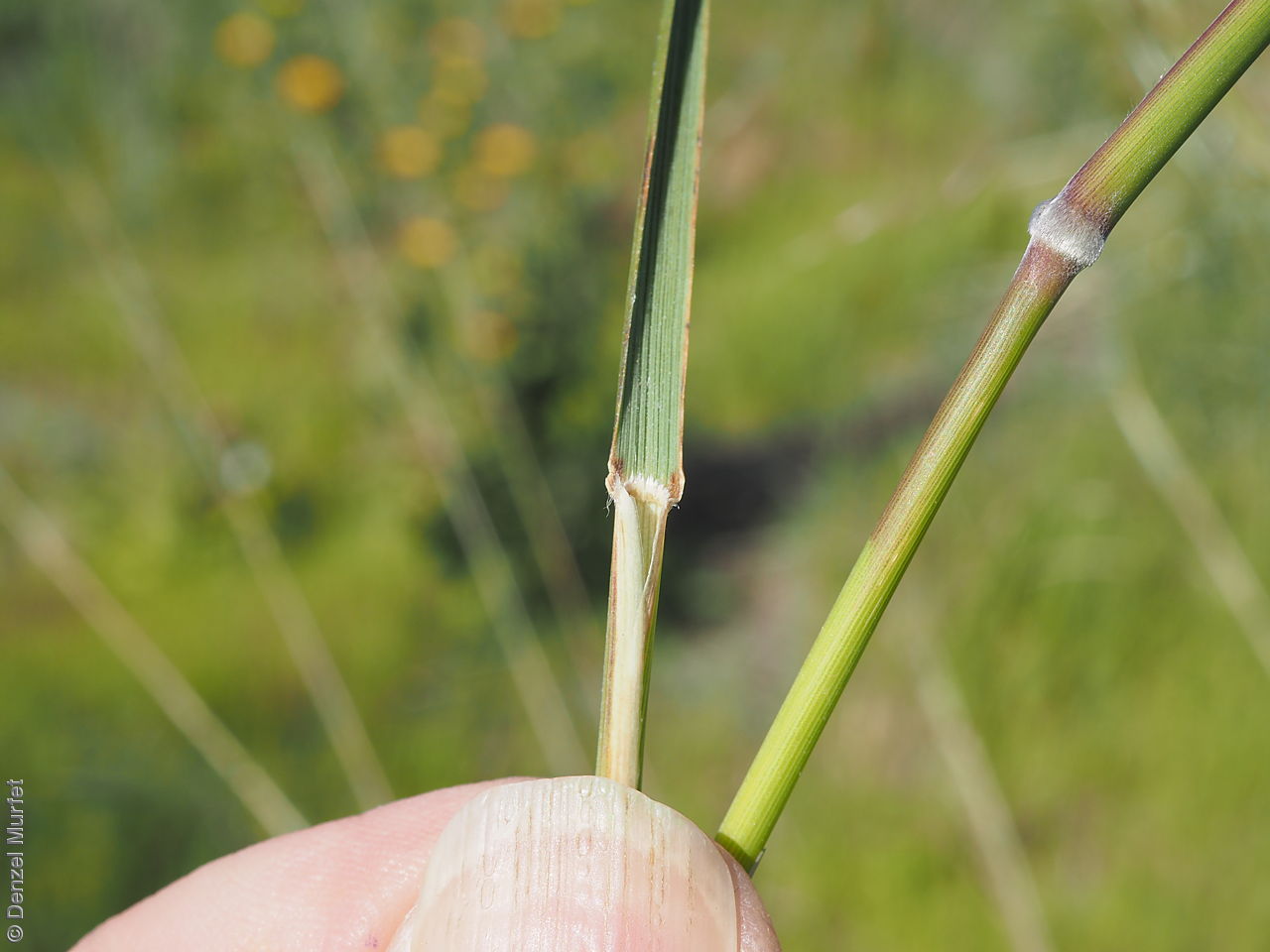
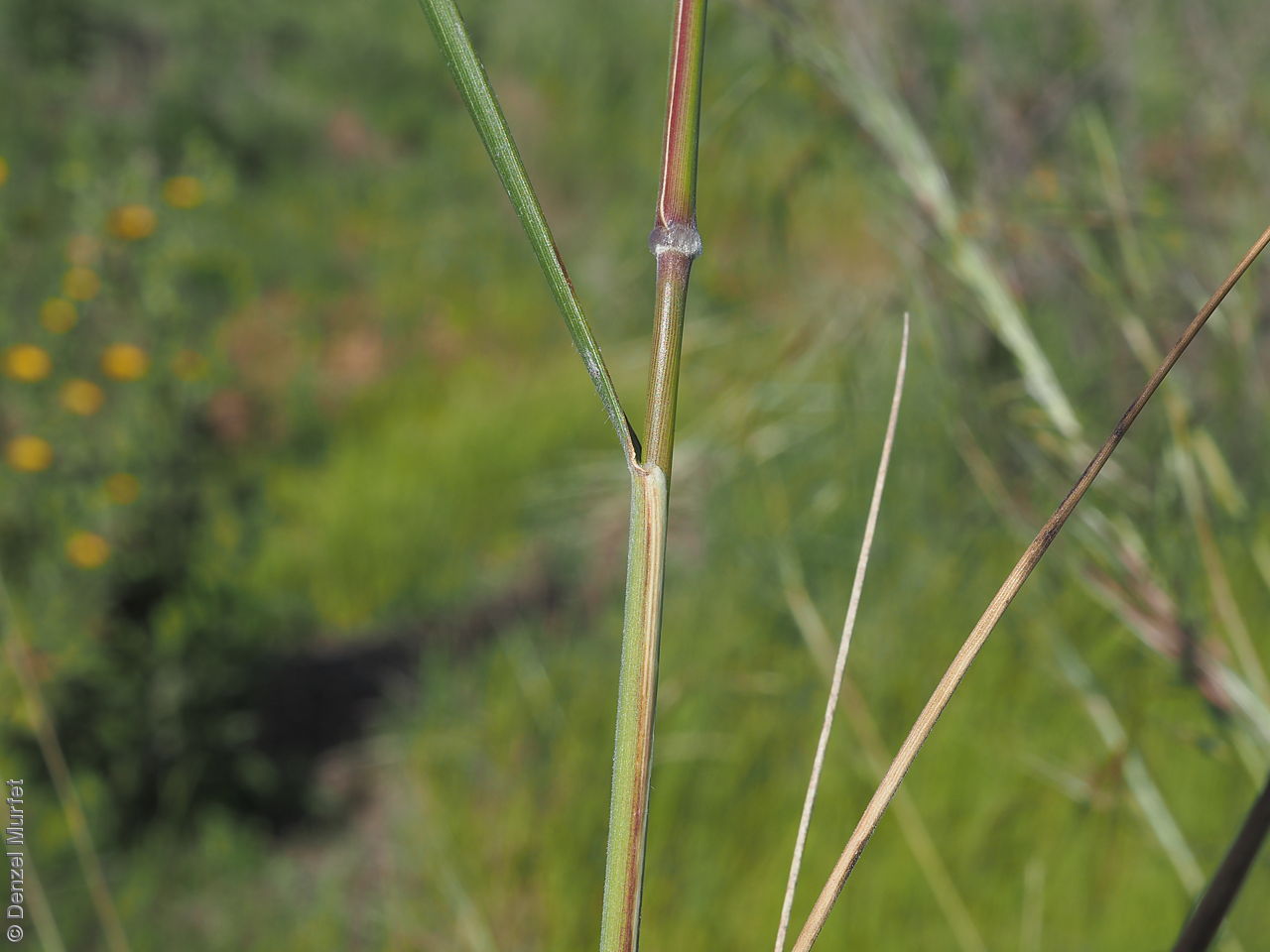
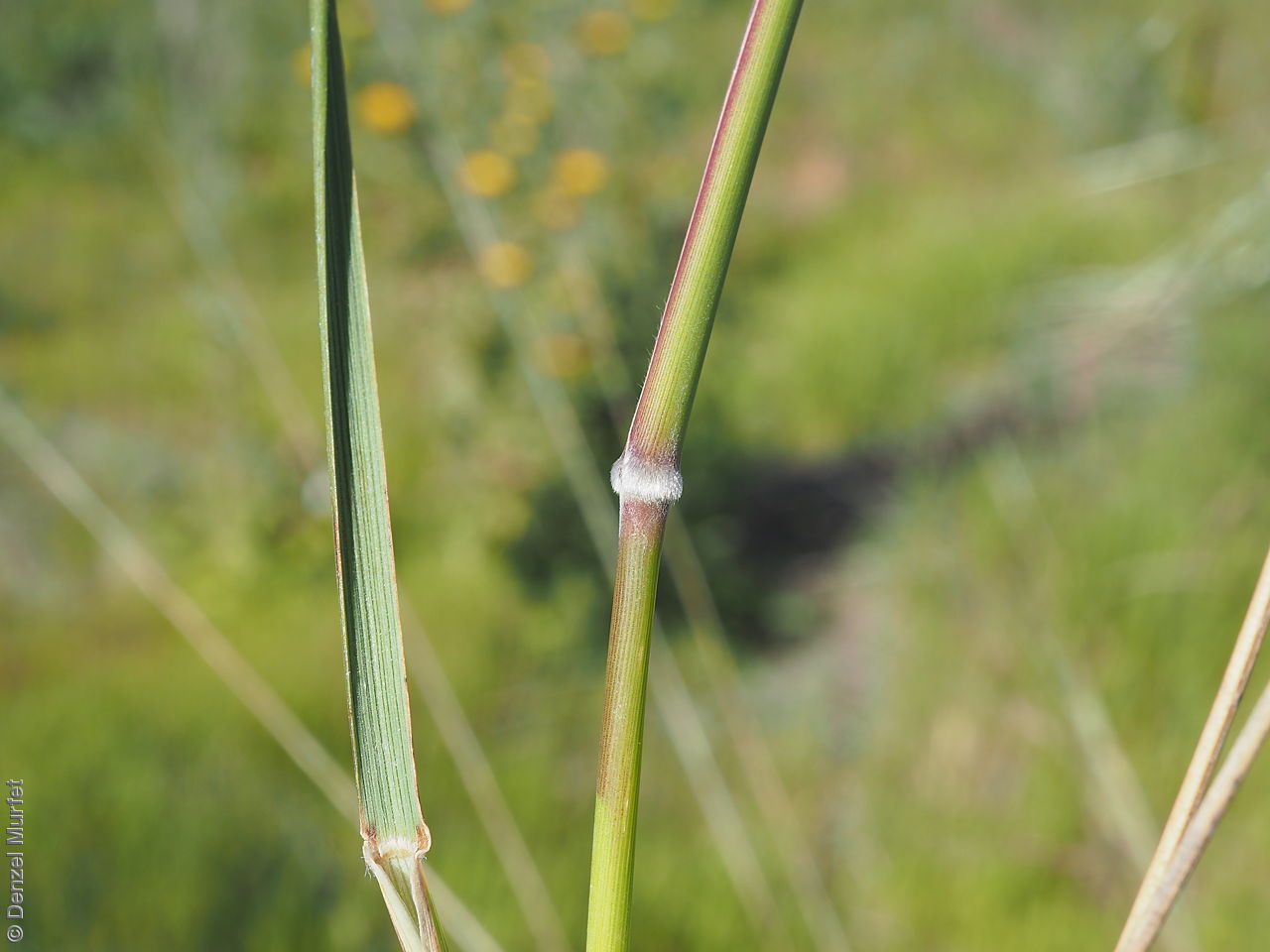
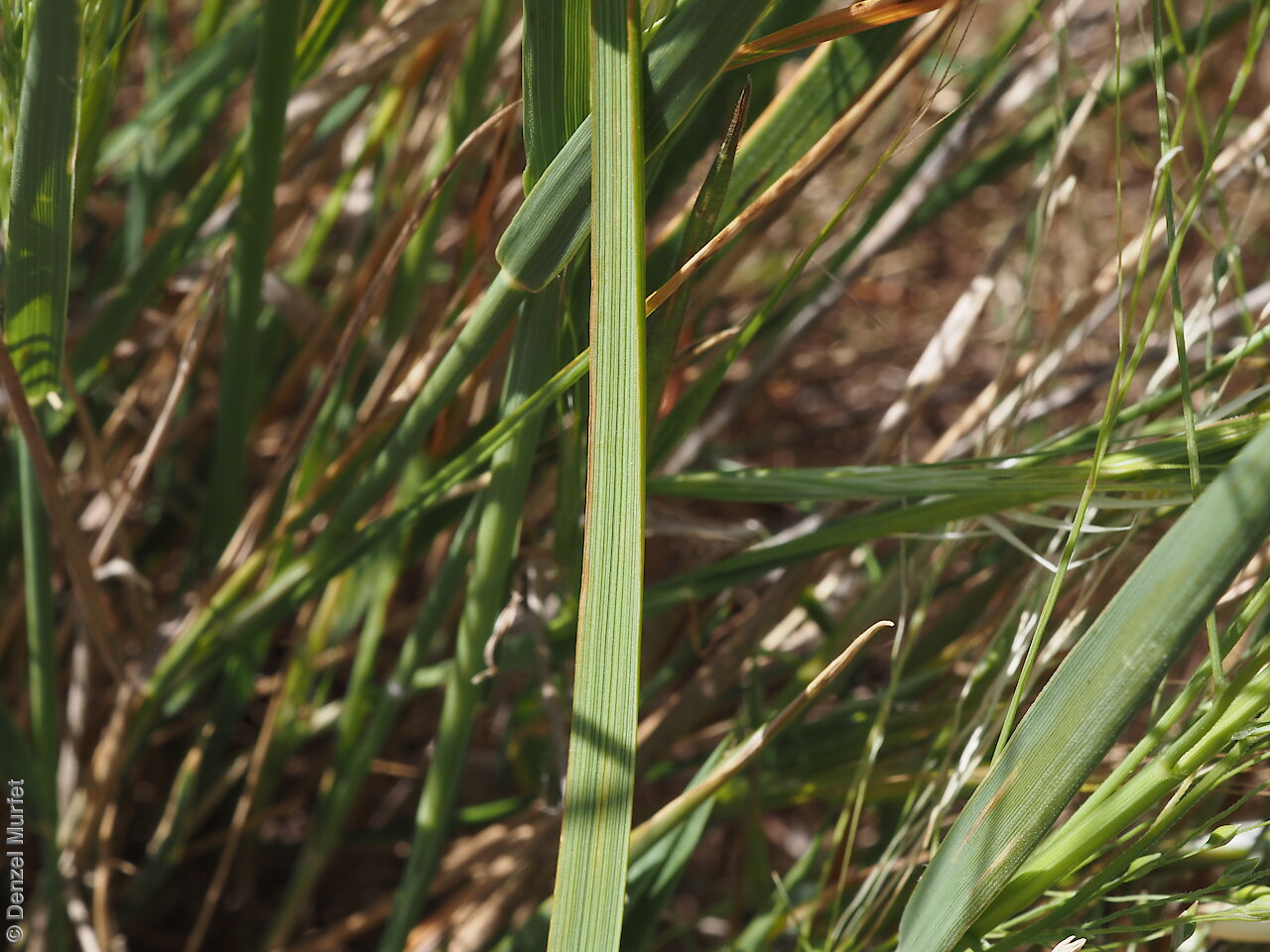
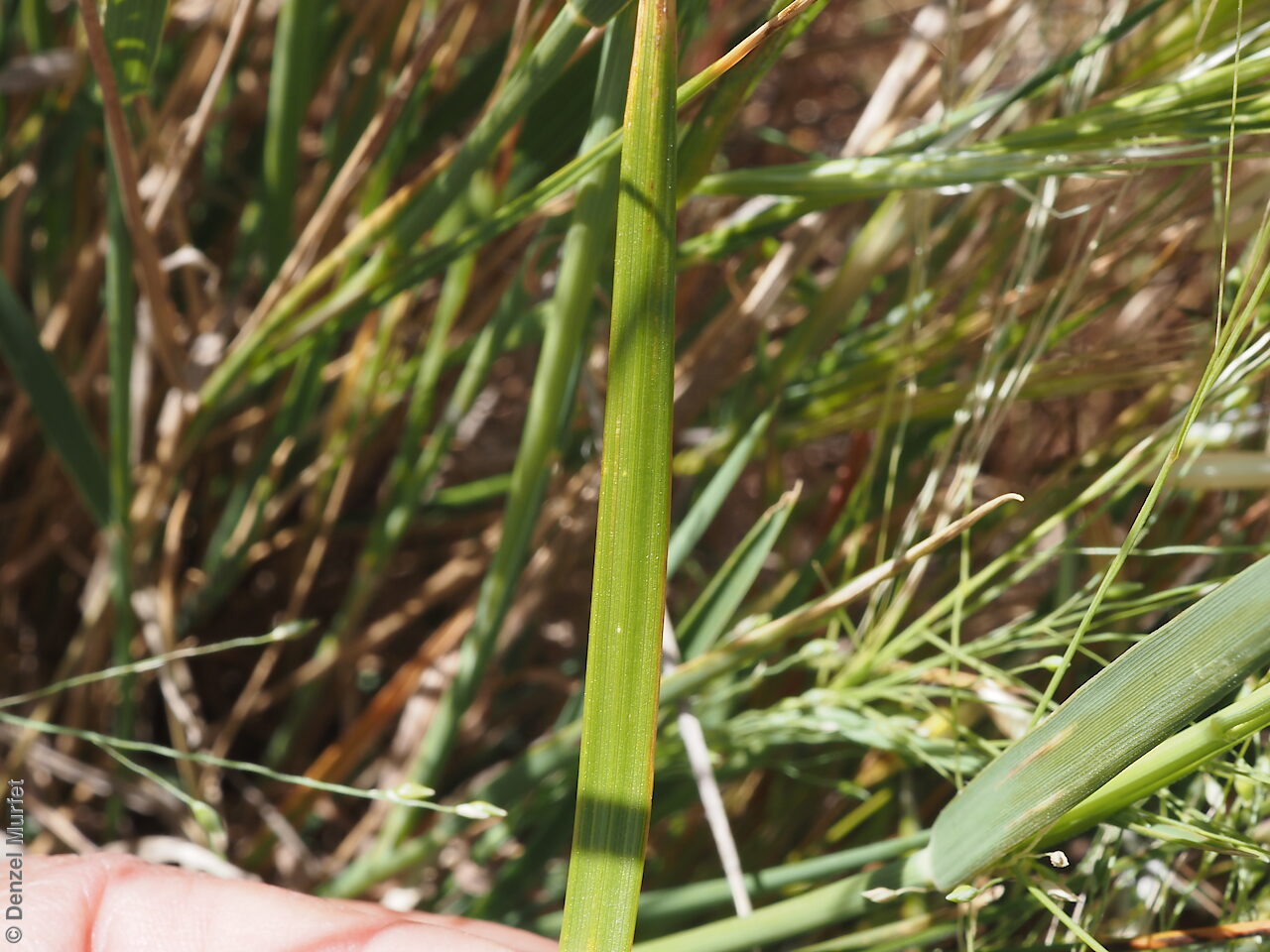
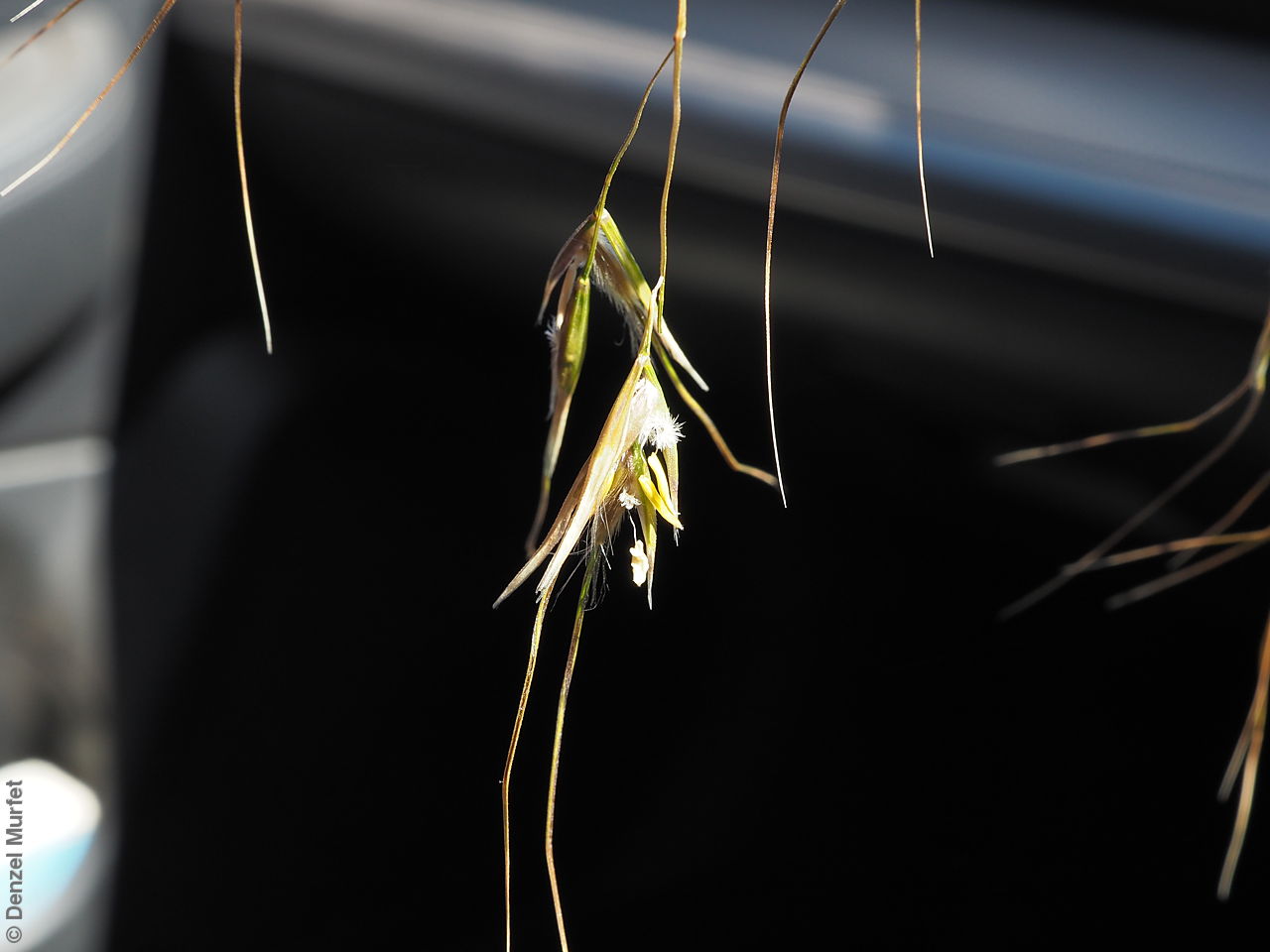
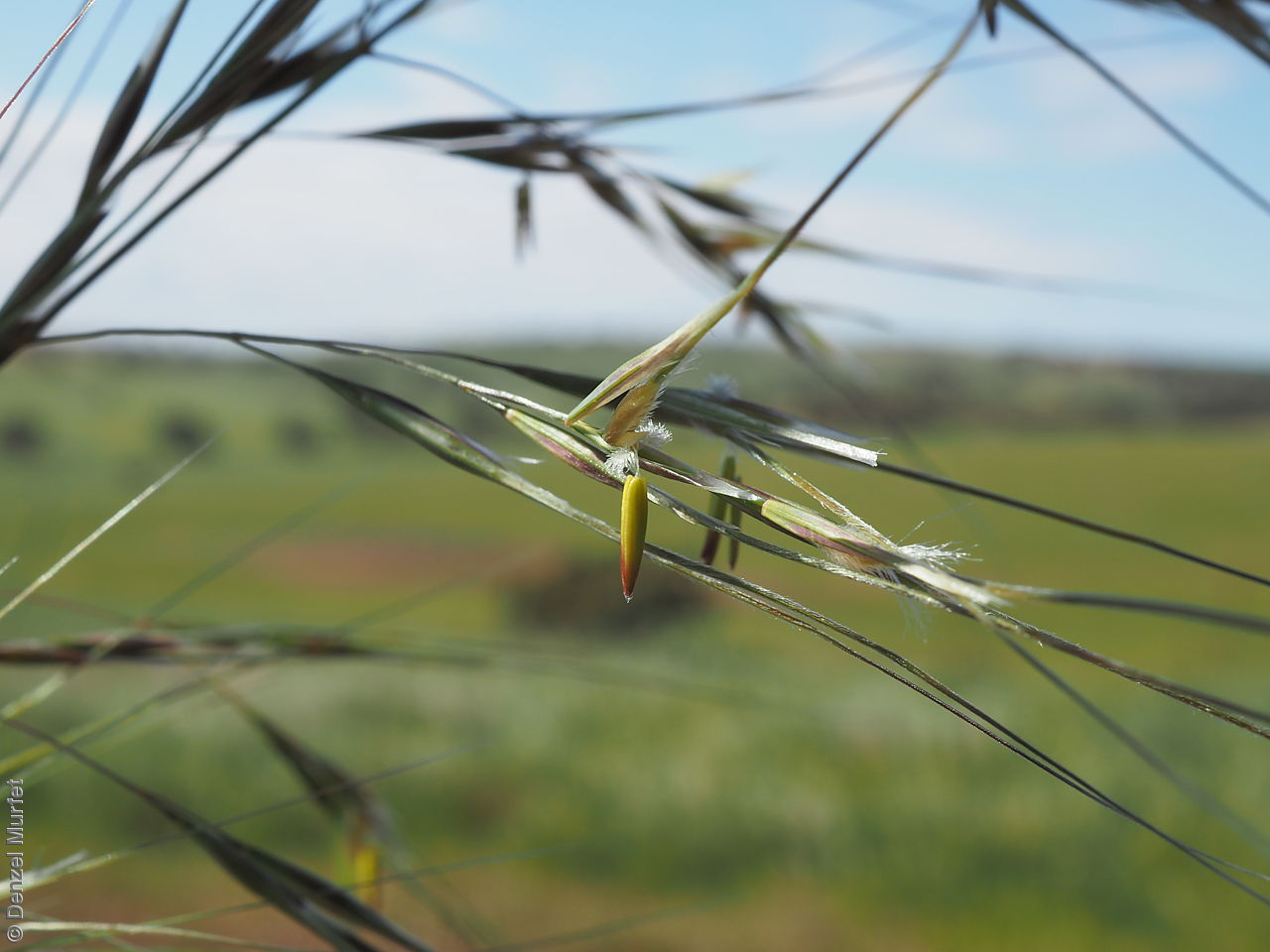
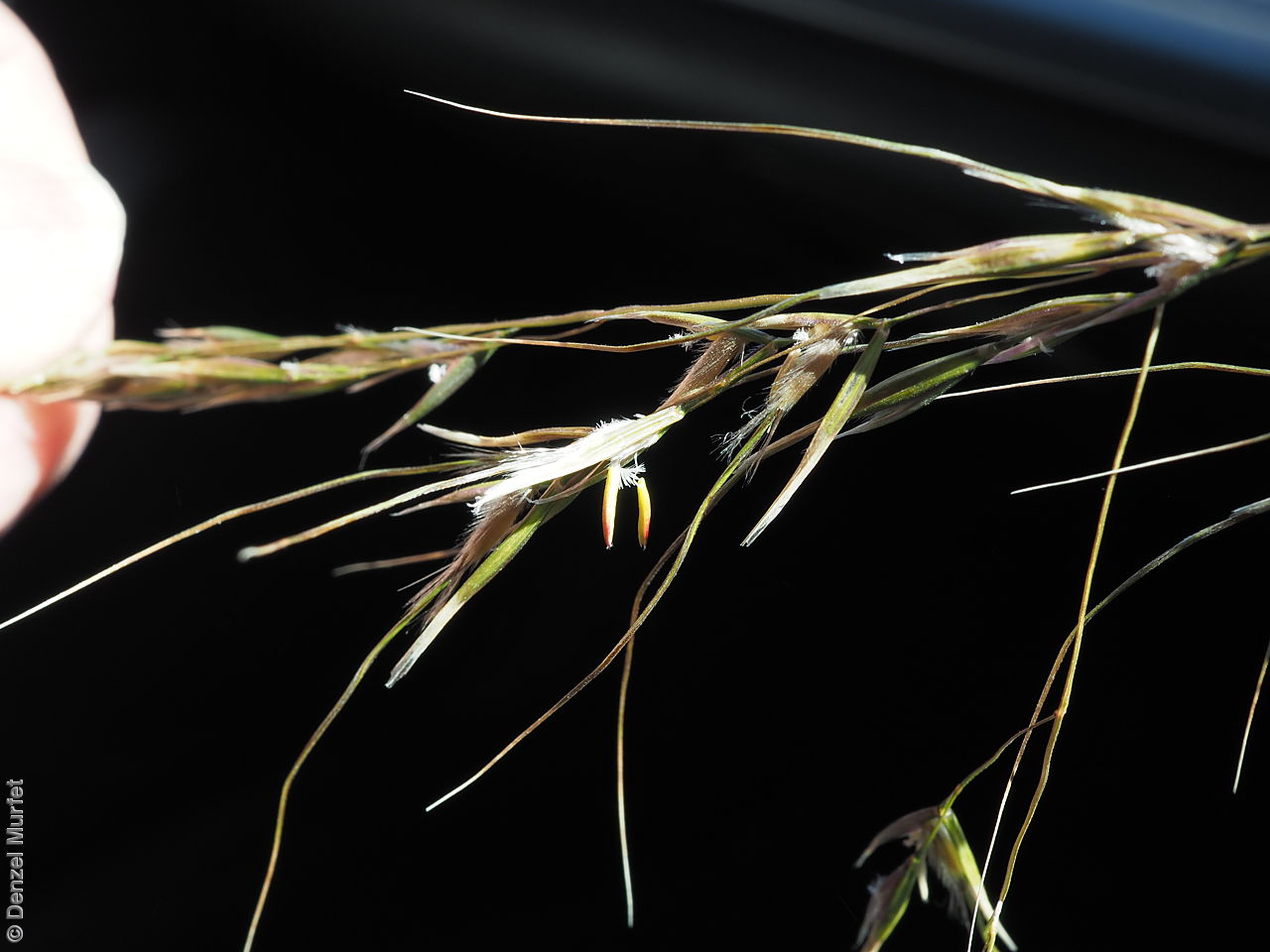
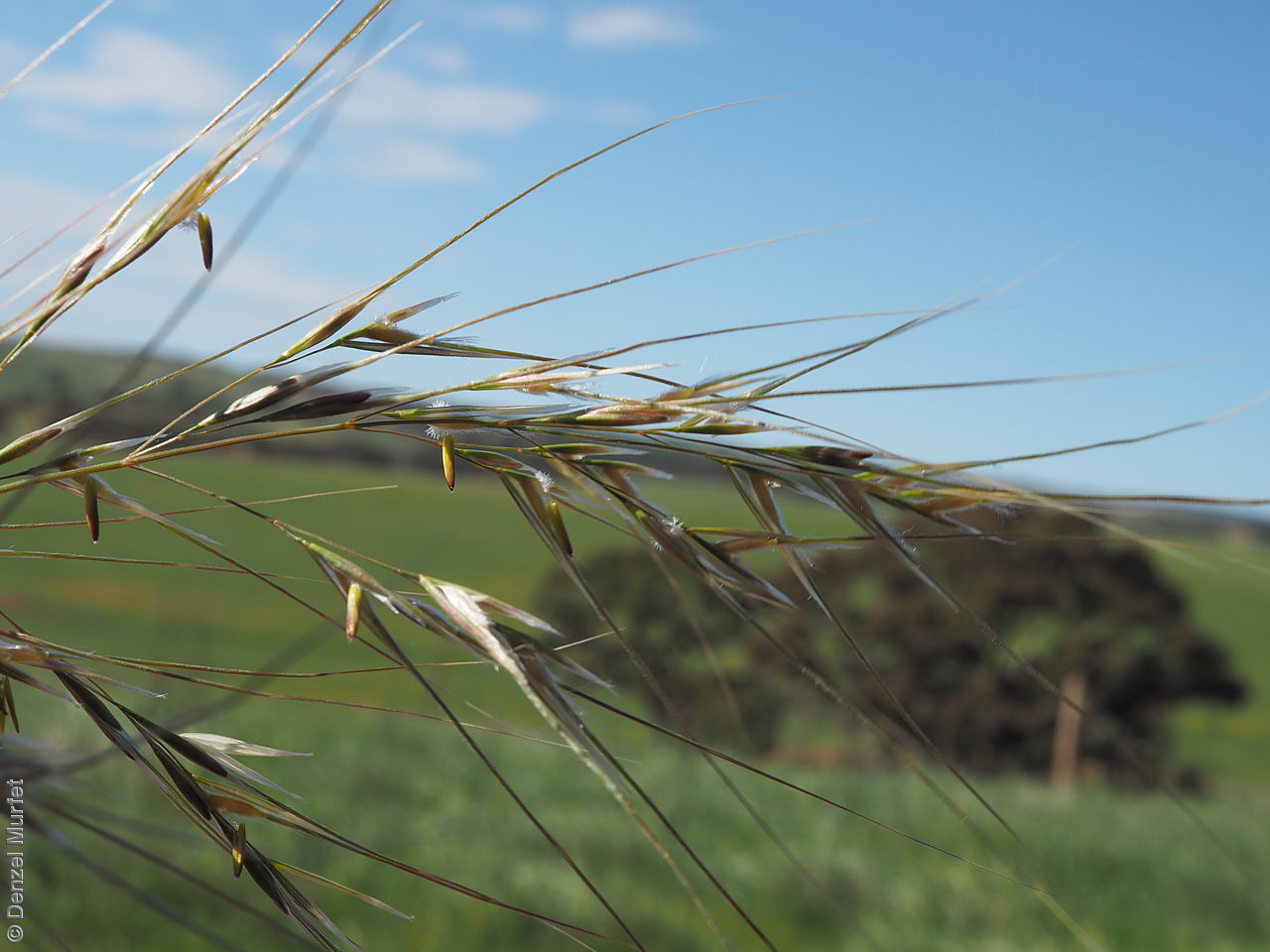
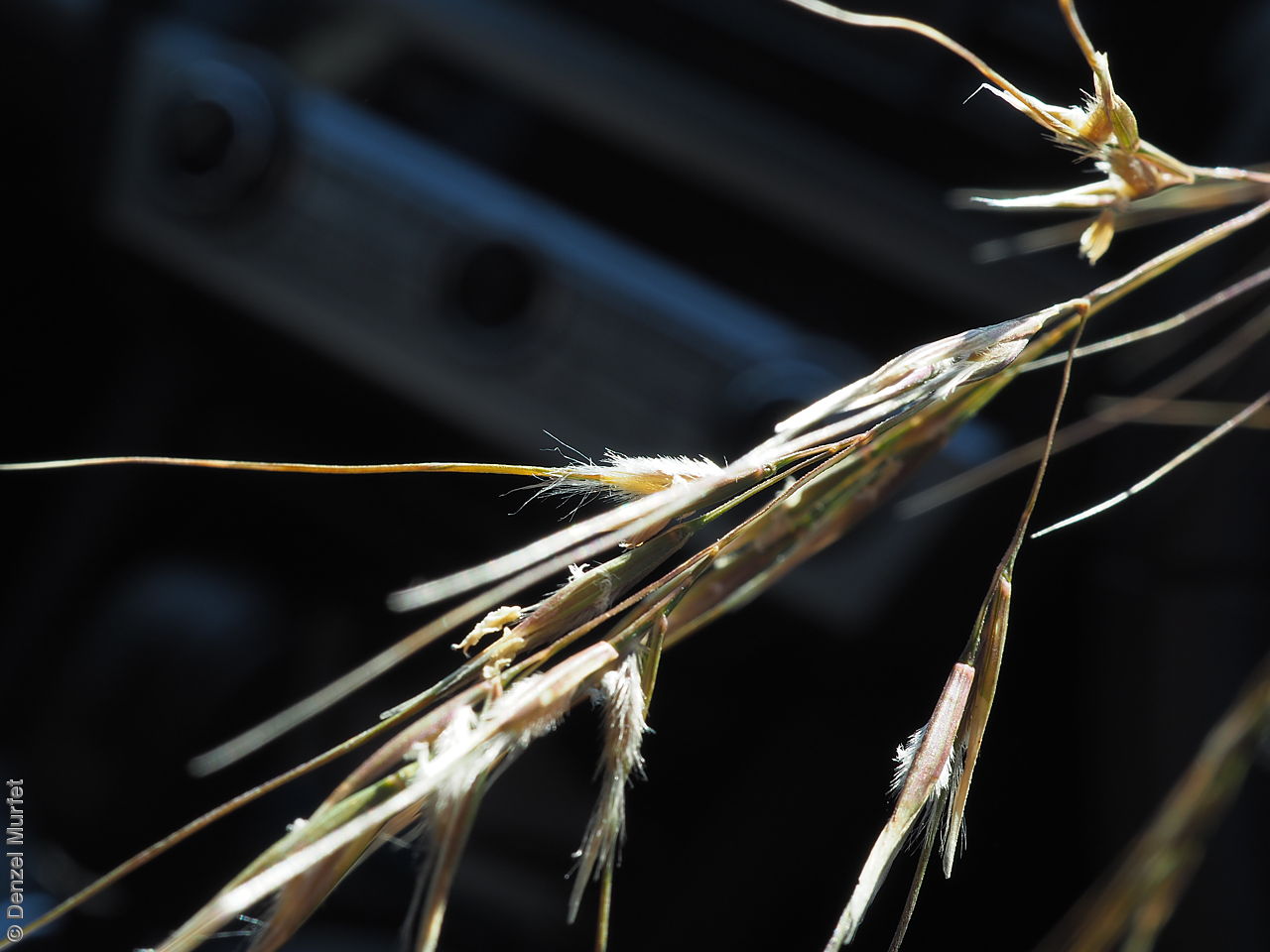
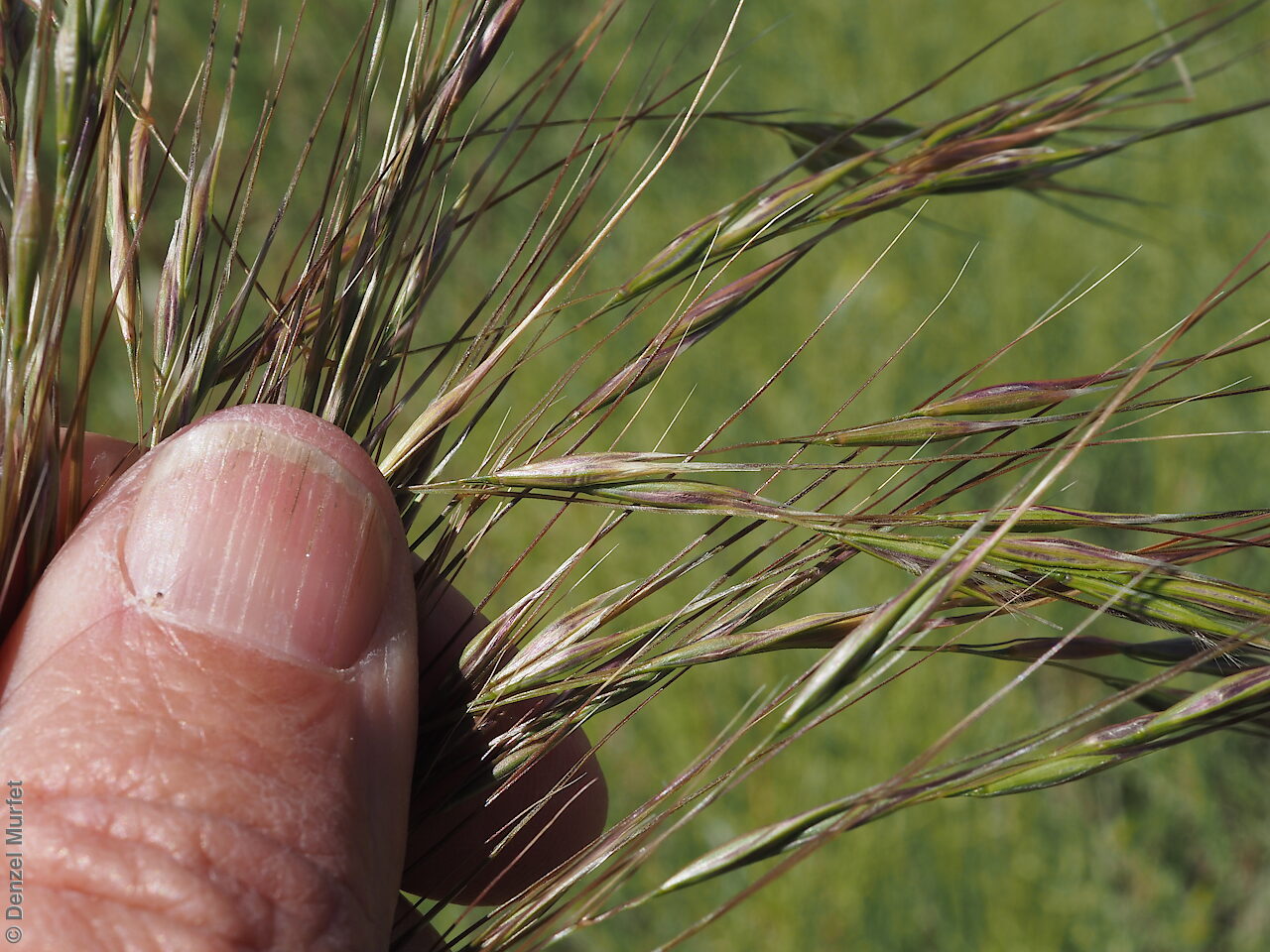
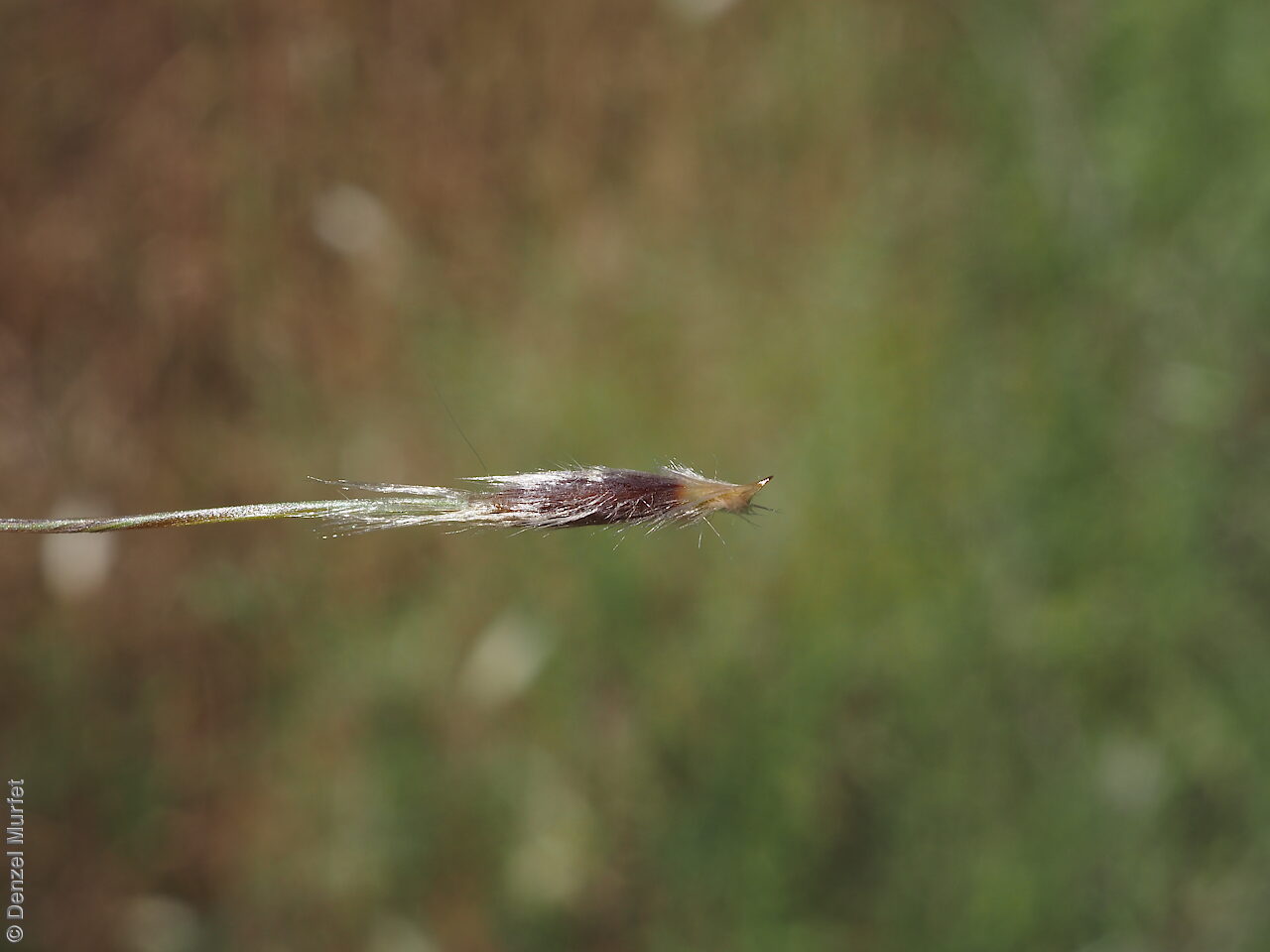
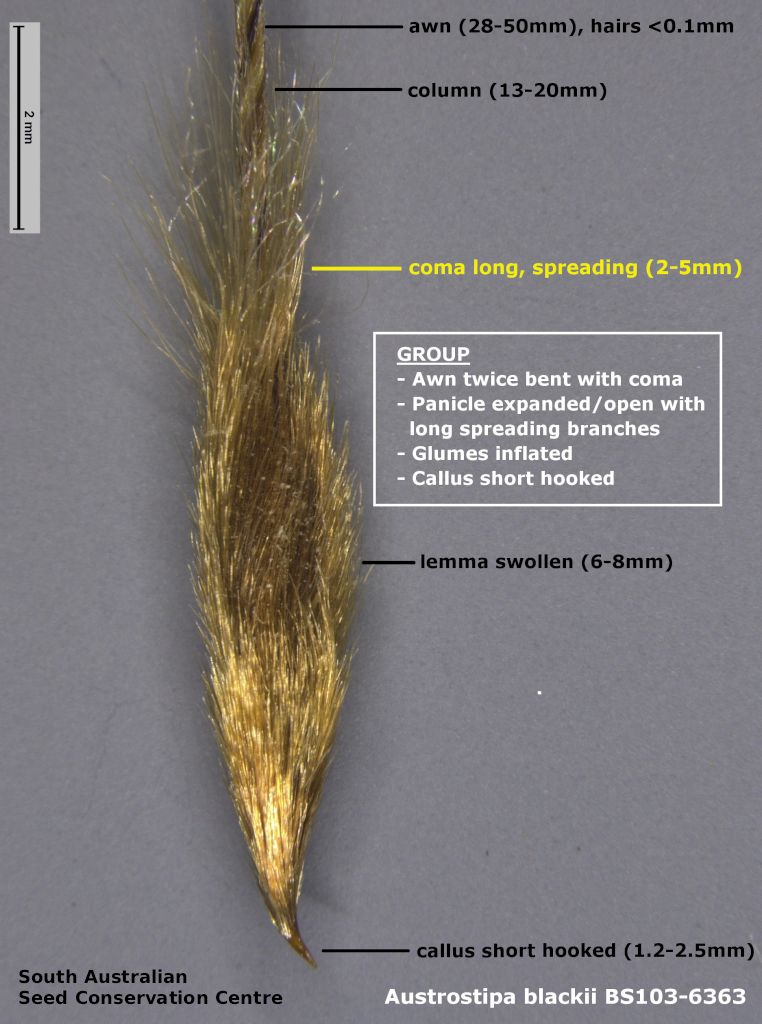
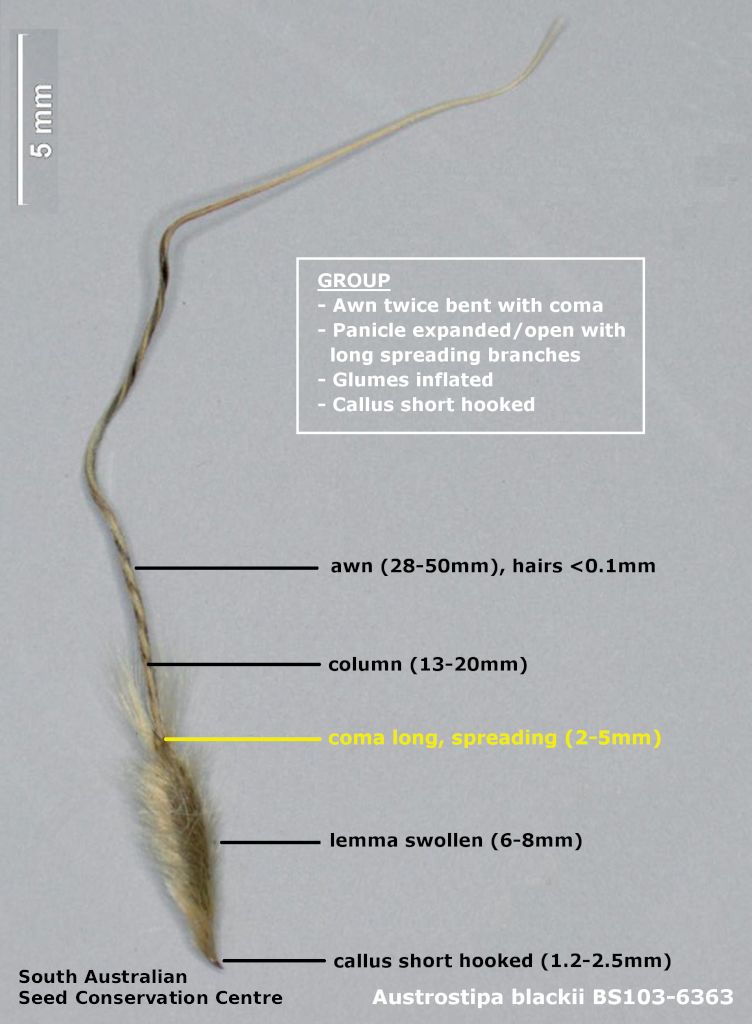
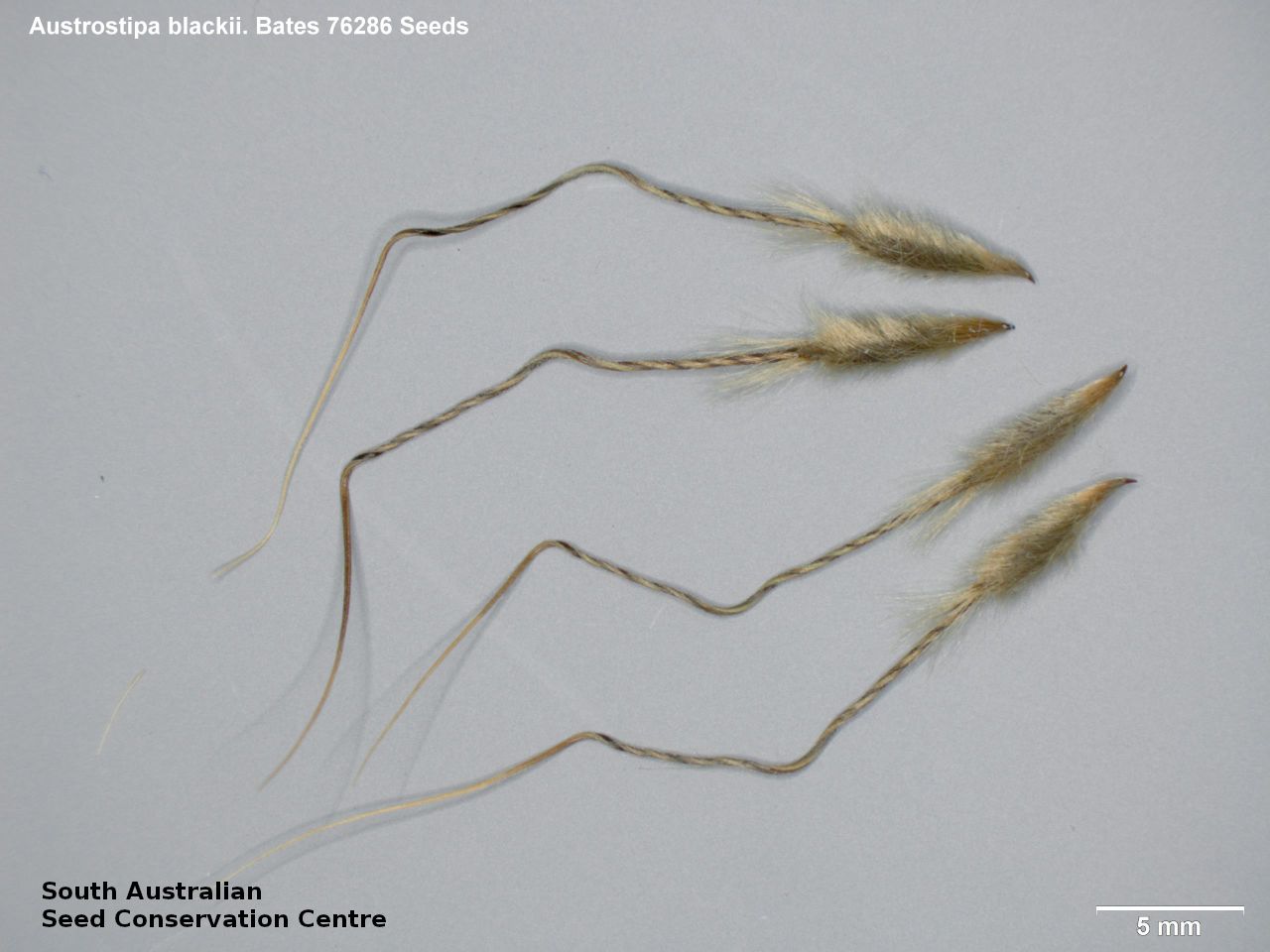
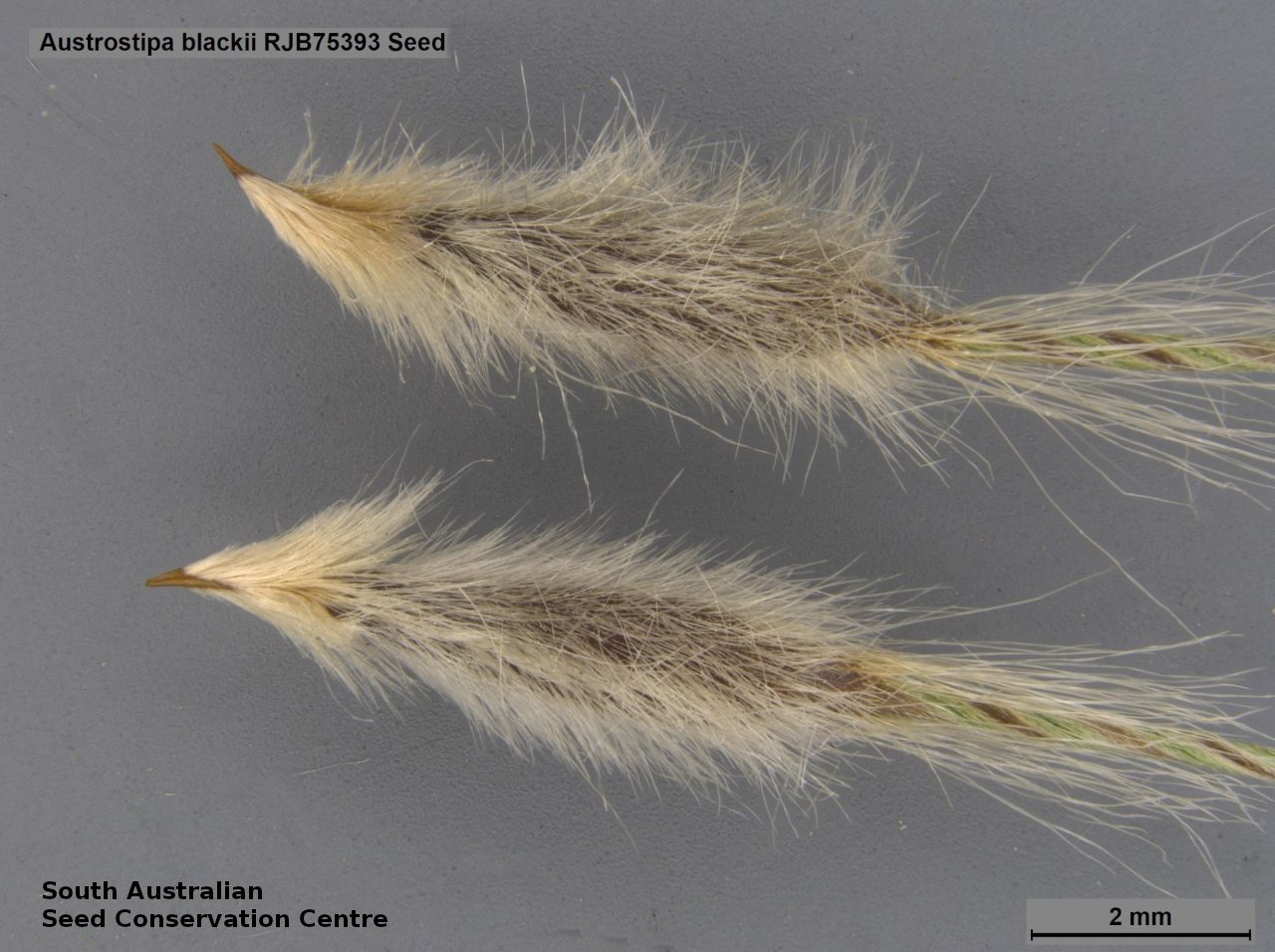
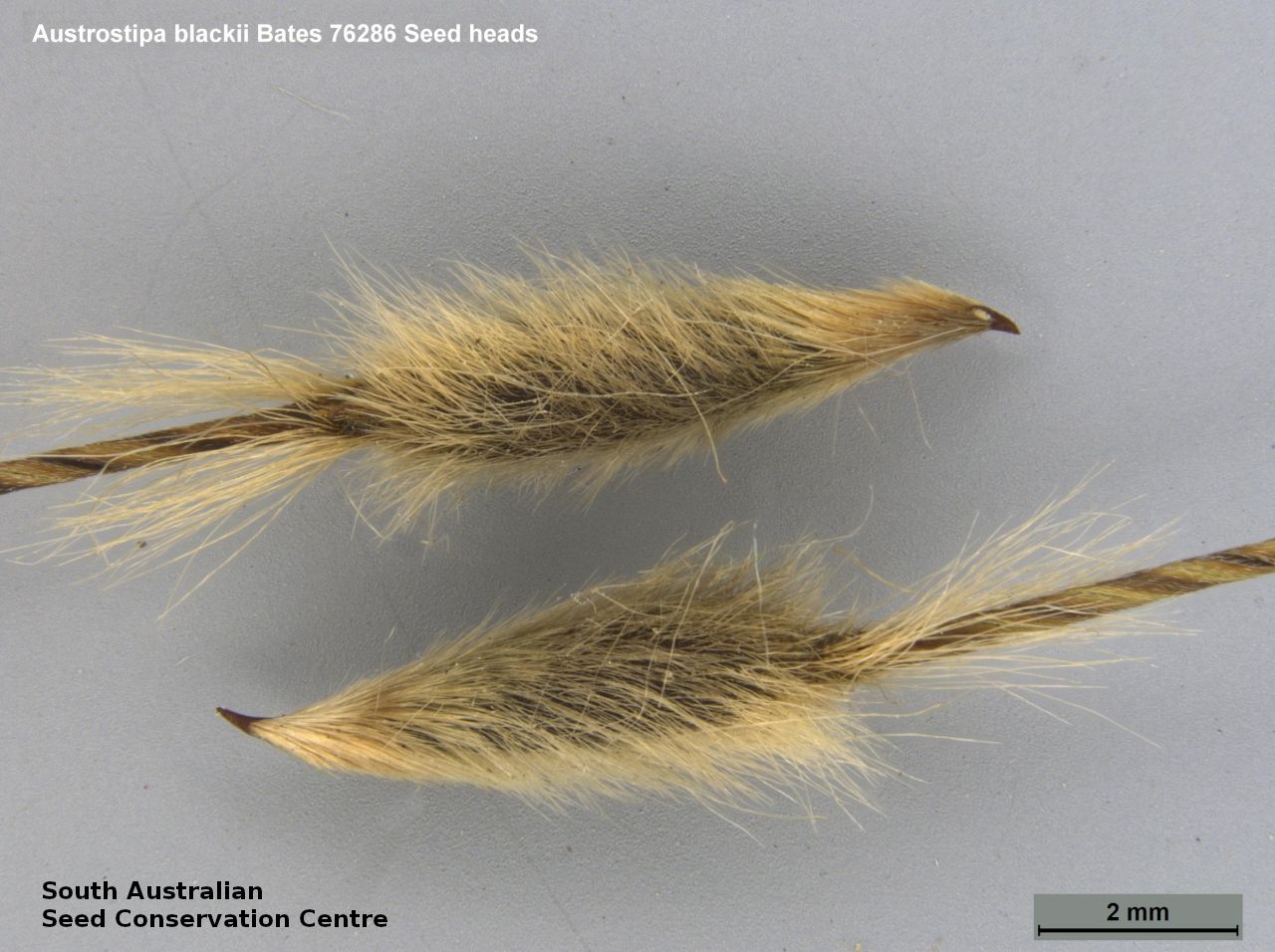

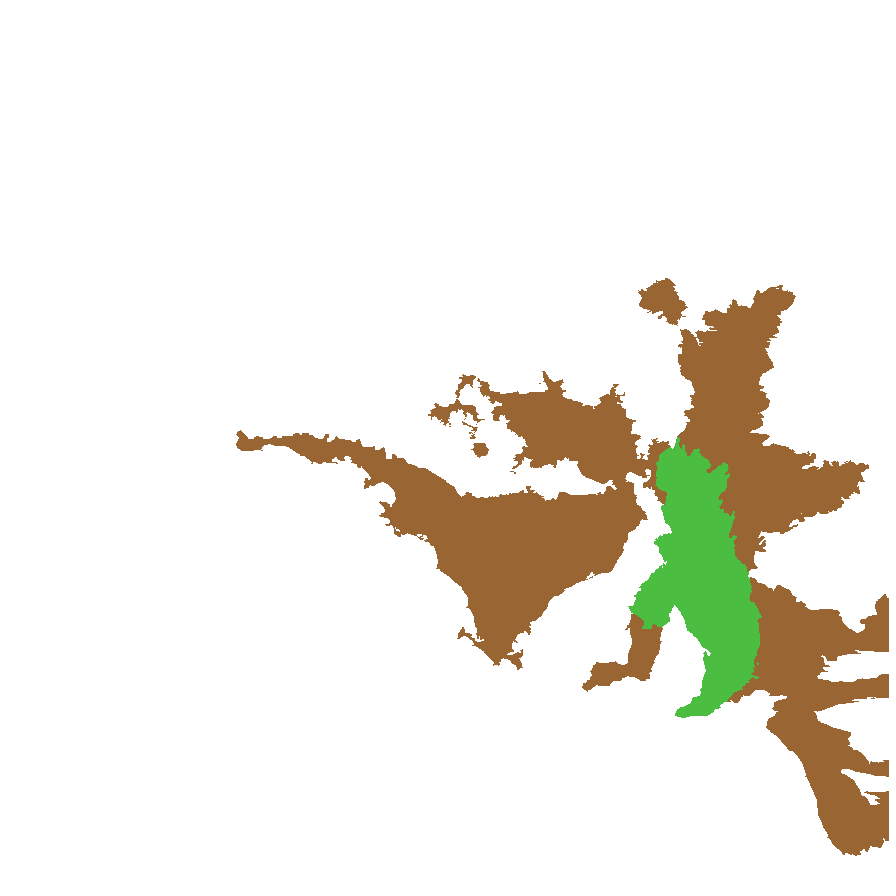
Botanical art
Prior names
Stipa aristiglumis var. cana
Stipa clelandii
Stipa pubescens var. comosa
Stipa blackii
Etymology
Austrostipa from the Latin 'auster' meaning south and the genus Stipa, referring to the genus being allied to Stipa but restricted to Australia. Blackii named after John McConnell Black (1855�1951), a Scottish born South Australian botanist and author of first Flora of South Australia.
Distribution and status
Found in the southern part of South Australia, from the Gammon Ranges to the upper South-east growing in open forest and woodland, grassland on sandy loam to clay loam. Also found in Western Australia, New South Wales, Victoria and Tasmania. Native. Uncommon in South Australia. Rare in Western Australia and Tasmania. Common in the other states.
Herbarium regions: Flinders Ranges, Eastern, Eyre Peninsula, Northern Lofty, Murray, Yorke Peninsula, Southern Lofty, South Eastern, Green Adelaide
NRM regions: Adelaide and Mount Lofty Ranges, Eyre Peninsula, Northern and Yorke, South Australian Arid Lands, South Australian Murray-Darling Basin, South East
AVH map: SA distribution map (external link)
Plant description
Tufted perennial grass to 1.2 m with culms unbranched. Leaves (at least the lower ones and the sheath), distinctly pubescent with blade expanded to inrolled to 30 cm long and 5 mm wide. Inflorescence an open panicle to 30 cm long with spreading branches and bulging purplish glumes. Flowering between August and November.
Key to this species: awn twice bent with coma; inflated glumes; short-hooked callus; long spreading coma hairs (2-5 mm); sheath pubescent. Fruits are deep reddish or golden brown lemma to 7.5 mm long; stout, slightly to distinctly constricted near the apex with a tuberculate surface covered with slightly spreading white or golden hairs; coma with long dense spreading hairs longer than those on the body of the lemma; callus short and hooked to 2.5 mm long; awn twice bent and sometimes slightly off centre; palea about equal to lemma. Seeds are yellow-brown fat ellipsoid grain to 4 mm long within the lemma. Seed embryo type is lateral.
Seed collection and propagation
Collect seeds between November and January. Use your hands to gently strip the seeds (lemma) off the mature fruiting spike, those that are turning golden brown. Mature seeds will come off easily compare to the immature seeds that remain on the spike. Alternatively, you can break off the whole fruit spike to allow some of the seeds to mature further. Place the seeds/spike in a tray and leave to dry for two weeks. No further cleaning is required if only seed collected. If seed spikes collected, use hand to strip off the mature seeds. Store the seeds with a desiccant such as dried silica beads or dry rice, in an air tight container in a cool and dry place. Viability of grass seeds could be very viable, depending on time of seed collections and seasonal conditions.
| Location | No. of seeds (weight grams) | Number of plants | Date collected | Collection number Collection location | Date stored | % Viability | Storage temperature |
|---|---|---|---|---|---|---|---|
| BGA MSB | 8,500 (29.35 g) 8,500 (29.35 g) | 100+ | 22-Nov-2005 | DJD204 Northern Lofty | 9-Aug-2006 | 15% | -18°C |
| MSB | 3,400 (10.95 g) | 30 | 30-Oct-2007 | RJB75445 South Eastern | 10% |
Number of plants: This is the number of plants from which the seeds were collected.
Collection location: The Herbarium of South Australia's region name.
% Viability: Percentage of filled healthy seeds determined by a cut test or x-ray.